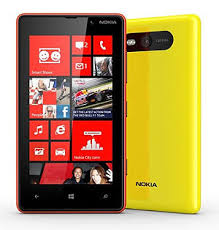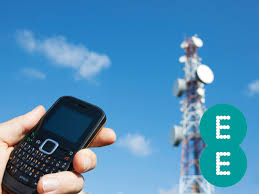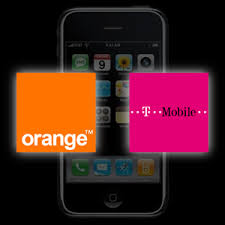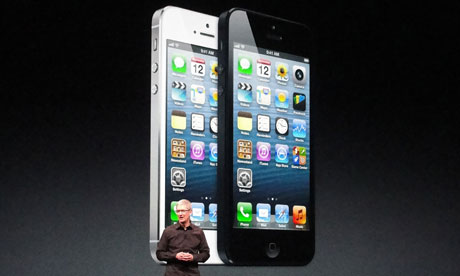 |
EVERYTHING EVERYWHERE LAUNCHES EE
A new company, a new network, a new brand
|
Everything Everywhere have announced the launch of
EE – the UK’s most advanced digital communications company.
EE will become the new name of the Everything Everywhere business and its network.
EE will also be launched as a new superfast customer brand in the
coming weeks. It is a brand born in the digital age, designed to serve
both consumers and businesses, offering the UK’s only 4G mobile service
and complemented by fixed-line fibre broadband.
The new EE brand will stand alongside Orange and T-Mobile. Together
they will provide mobile services to 27 million people, now served by
the UK’s biggest and best network.
 Olaf Swantee, CEO of EE said:
Olaf Swantee, CEO of EE said: “Today we launch a new company, a new network and a new brand for Britain.
“Our plans to revolutionise the UK communications market with a
faster network and an exciting new brand for the digital age are built
on solid investment and a simple belief that customers deserve better.
“We look forward to connecting the country with superfast mobile speeds in the coming weeks, months and years.
“And it starts today, with the announcement of our new business, our
new brand and a new digital infrastructure that our company, our
customers and the country can be proud of.”
EE – superfast 4G and fibre
The EE customer brand will launch with 4G services for consumers and businesses in the coming weeks.
It will be the first brand in the country to offer a mobile 4G
service – the pioneering new technology that offers superfast mobile
internet at speeds typically five times faster than 3G speeds today.
EE will also launch a fibre broadband
service to homes and businesses with fixed-line internet speeds
typically ten times faster than today’s average broadband speeds.
It means that EE’s 4G customers will be the first in the UK to enjoy superfast speeds on their mobile and at home or at work.
With superfast 4G mobile, customers will be able to:

- Access the web on the go without waiting
- Download high-definition movies in minutes
- Watch live TV on the move without buffering
- Play live multiplayer games on the go
- Download large email attachments quicker than ever
- Make high quality video calls on the move
Four cities – London, Bristol, Cardiff and Birmingham – are switched
on today for the company’s engineers to begin live testing and systems
integration, in readiness for the customer launch.
EE’s 4G network will cover a third of the UK population in 2012 – over 20 million people – and customers on the EE
brand will also have access to the largest 3G network in the UK outside
of the 4G cities. Further towns, cities and rural areas, will follow
rapidly with 2013 population coverage to reach 70%, with 98% covered by
2014.
EE’s 2012 launch schedule will see 16 areas of the country connected
to 4G by Christmas – the UK’s four capitals and twelve further major
cities.
The 16 cities are London, Edinburgh, Cardiff, Belfast,
Birmingham, Bristol, Derby, Glasgow,
Hull, Leeds, Liverpool, Manchester, Newcastle, Nottingham, Sheffield and Southampton.
EE will offer a range of state-of-the-art devices alongside its
superfast 4G mobile network with more to be announced shortly. Today, EE
confirmed it is to launch the following 4G devices:
 Samsung Galaxy SIII LTE
Samsung Galaxy SIII LTE – with a 4.8 inch HD Super
AMOLED display, you can watch videos on your mobile like never before.
Innovative Smart Stay automatically recognises when you are looking at
the phone, maintaining a bright display for
continued viewing pleasure.
 Nokia Lumia 920
Nokia Lumia 920 – flagship Nokia Windows Phone 8
smartphone. Take bright, blur-free photos and videos in any light
conditions with PureView technology – Optical Image Stabilisation and
Carl Zeiss lens and view on a 4.5” PureMotion HD+ capacitive display.
 Nokia Lumia 820
Nokia Lumia 820 – colourful, stylish, innovative
design, with a 4.3 OLED WVGA screen. Capture great photos and movies
with an 8MP Auto Focus camera, with Carl Zeiss optics and dual LED
flash. Charge wirelessly without plugging in using a Wireless Charging
Shell.
 The HTC One XL
The HTC One XL – high quality entertainment and
precision navigation combine in this handset, thanks to a large 4.7” HD
touchscreen display. Full HD video, and front and rear facing camera let
you capture crisp, vivid photos and movies in high
quality wherever you are.
 Huawei Ascend P1 LTE
Huawei Ascend P1 LTE – a powerhouse dual-core
processor is packed in to this handset’s slim design. Take stunningly
clear images or HD videos on an 8MP autofocus camera with LED flash and
playback on the 4.3” high-res touchscreen.
 Huawei E589 Mobile WiFi
Huawei E589 Mobile WiFi – hook up to five devices to
the EE 4G network, making your existing phone, laptop or digital screen
superfast even if they’re not 4G. Long battery life of up to 10 hours,
enjoy 4G wireless broadband anytime, anywhere.
 Huawei E392 Mobile Broadband stick
Huawei E392 Mobile Broadband stick – download and
upload documents and files in super quick time on the go with this
device. Make your laptop mobile and superfast, by hooking it up to the
EE network. You’ll stay compatible with 3G too and seamlessly switch to
the optimal connection.
EE’s superfast fibre broadband service will launch at the same time
to complement the company’s superfast 4G mobile service. It will be
available to 11 million households and businesses by the end of the year
reaching two thirds of UK households and businesses by the end of 2014.
Service, everywhere

The new EE stores – formerly Orange
and T-Mobile shops – will serve customers of all three brands, giving
them access to service and sales in twice as many locations as before.
More than 10,000 EE staff have been trained, and will offer
specialist advice in store, on the phone and on-line. The company as
trained its Customer Team staff to become experts in mobile operating
systems, meaning its customers will get a specialist service, regardless
of which device they use. It is the only operator to offer dedicated
expertise based around device operating systems.
The EE network

With the Orange and T-Mobile networks now combined, from today
customers will begin switching over to the new seamless EE network, the
largest in the UK. By the end of the year, all 27 million customers will
be using the EE network.
It means that Orange and T-Mobile customers can now get faster 3G
service, with speeds of up to 21Mbps, and more coverage than ever
before.
EE will also launch superfast 4G mobile and fixed-line fibre
broadband services in the coming weeks. It will also offer standard
broadband via ADSL in non-fibre areas.
Orange and T-Mobile customers

Orange and T-Mobile customers will continue to benefit from the best 3G and 2G mobile network.
It means that from today – and over the coming months – customers
using Orange and T-Mobile will begin to see their phone signal indicator
change to EE, whether they are on 3G or
2G, showing that they are on the UK’s biggest and best network. This is
at no extra cost and there are no changes to their existing price plans.
Orange and T-Mobile plans will continue to be offered to new and
existing customers, and Orange and T-Mobile customers will also be among
the first to have the opportunity to access 4G through a move to the
new EE customer brand.
- EE network switched on
- EE’s new customer brand to launch in the coming weeks with pioneering superfast 4G LTE mobile services and fibre broadband
- EE’s superfast 4G service to launch in 16 cities by Christmas,
covering 20 million people – a third of the population. Nationwide 4G
roll out to accelerate through 2013 with 98% of UK population covered in
2014
- EE’s superfast fibre broadband service to reach more than 11 million households and businesses by end of year
- Over 700 EE-branded stores to open – more than any other operator
- Orange and T-Mobile customers to benefit from the UK’s biggest and best mobile network, and more stores than ever before
EE Launch 4G signal and re brand of Orange and T-Mobile Stores on the 30th of October







